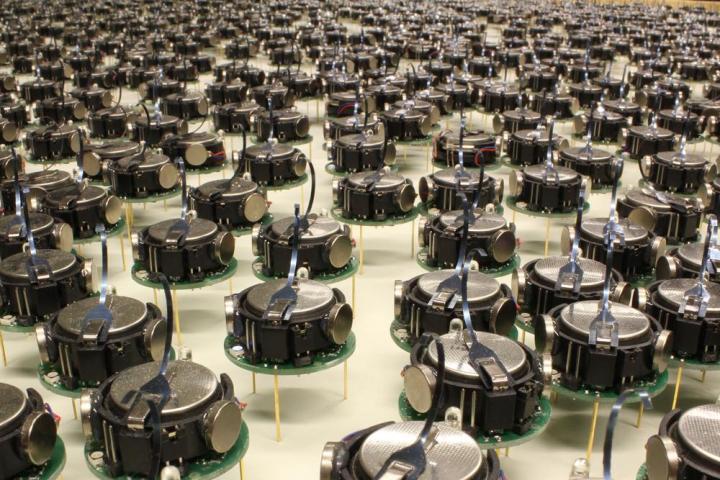
Computer science is often inspired by the natural world, and the Kilobot swarm is no different, taking cues from ants and micro-organisms that achieve complex goals by working as a large system following a simple set of orders. Each robot on its own is simple and prone to failure, a weakness humans will have to exploit before the tiny robots can join together into a group, where they’re most effective.

By communicating through infrared connections, the Kilobots are able to send location information and simple commands to each other, which may be related to plotting the fall of humanity, or the shape that the swarm is currently attempting to form. The control board is able to send messages to the entire swarm at once, programming them all for action in under 40 seconds. From that point on the Kilobots talk to their neighbors and form the desired shape around a few coordinating robots, navigating traffic jams, edges of the shape, and any robots that have wandered off from the group and gotten lost.
While their work may not seem particularly exciting right now, there are a lot of important lessons to be learned from coordinating robots in such large numbers. While most of these projects involve anywhere from 10 to 100 Kilobots, this most recent round tested to see how well 1024 of the low-cost robots could form simple shapes, such as the letter ‘K,’ a wrench, and a starfish. The real-world applications of this aren’t evident right away, but could encourage the use of robotics in areas that were believed to be most effectively completed by humans until now.The simple commands that the Kilobots use to disperse, follow each other, and communicate important locations could guide much more complex robots in much more complex operations.

[Images courtesy of the Harvard School of Engineering and Applied Sciences]
Editors' Recommendations
- Algorithm lets swarms of robots work together to create shapes without colliding
- Meet OffWorld, the startup that wants to mine the moon with a swarm of robots
- Astro the dog-inspired quadruped robot can sit, lie down, and… learn?
- Researchers have built a robot whose sole mission in life is to pick lettuce
- Japanese researchers use deep learning A.I. to get driftwood robots moving


